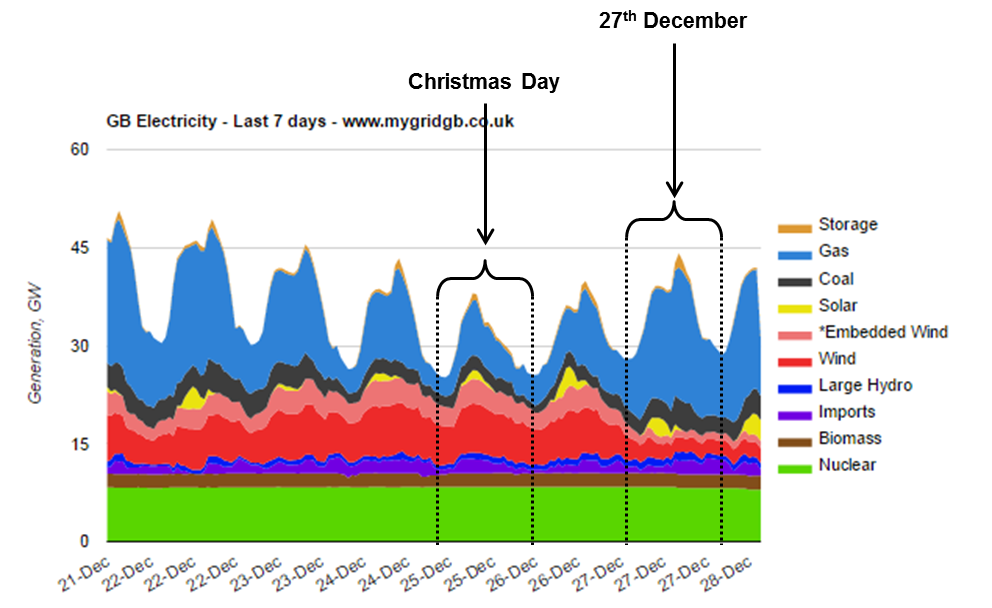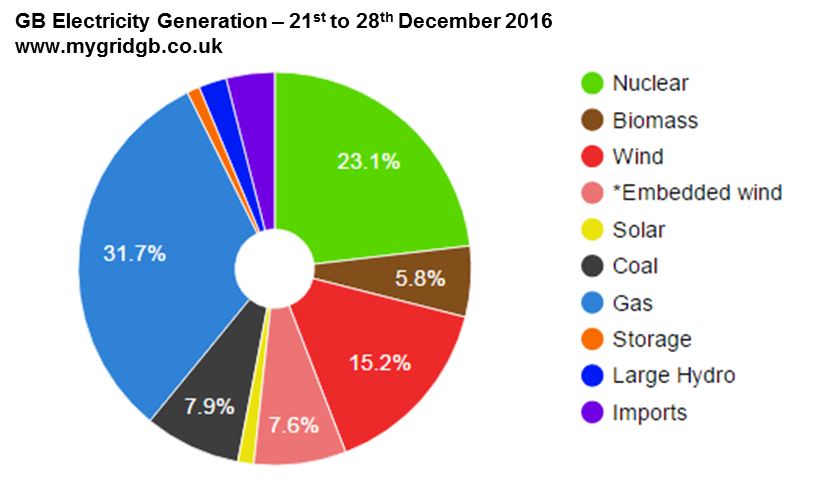Christmas Day 2016 created headlines due to high amounts of low carbon generation and low demand. Since then, the use of fossil fuels increased as Britain returned to work and as wind generation fell.

Christmas Day 2016 created headlines due to high amounts of low carbon generation and low demand (read more here and here). Since then, the use of fossil fuels increased as Britain returned to work and as wind generation fell. This can be seen in the chart below, which shows electricity generation over the past week.

I have highlighted Christmas Day and 27th December as they allow an important comparison.
- Demand was 24% higher on 27th December than on Christmas Day.
- Between the two days, the amount of wind generation dropped by 140%.
- Gas/coal power stations were switched on and imports were increased to meet demand.
The electricity industry produced an estimated 183g of CO2 per kWh on Christmas Day. As a consequence of rising demand and the drop in wind generation, that rose to 299g of CO2 per kWh on 27th December. That represents a 63% increase in the carbon intensity of electricity!
To put that in context, the Committee on Climate Change (CCC) looks at a target of less than 100g of CO2 per kWh by 2030. Although low carbon generation has contributed over 57% of our electricity over the past week, Britain was well above the 2030 target.

Removing coal power stations is not enough to meet carbon goals
Some people argue that Britain needs to see more nuclear, wind, solar and bio energy in the coming years. In line with Government policy, Britain should also see the closure of all coal plants by 2025 – in part because coal is more carbon intensive than gas.
Using figures from the Intergovernmental Panel on Climate Change (IPCC), you can retrospectively calculate that carbon impact of replacing all the coal generation with gas power stations.
My calculations show that replacing coal power with gas over the past 7 days would have reduced our carbon emissions from electricity by just 10.8%. This would have left Britain nearly 2.4x above the CCCs carbon target.
To drive down carbon emissions to the CCC’s target, a shift away from coal provides only part of the answer. This is why many argue that Britain will also need more low carbon generators. How much low carbon generation is needed and what that comprises provides much debate.
